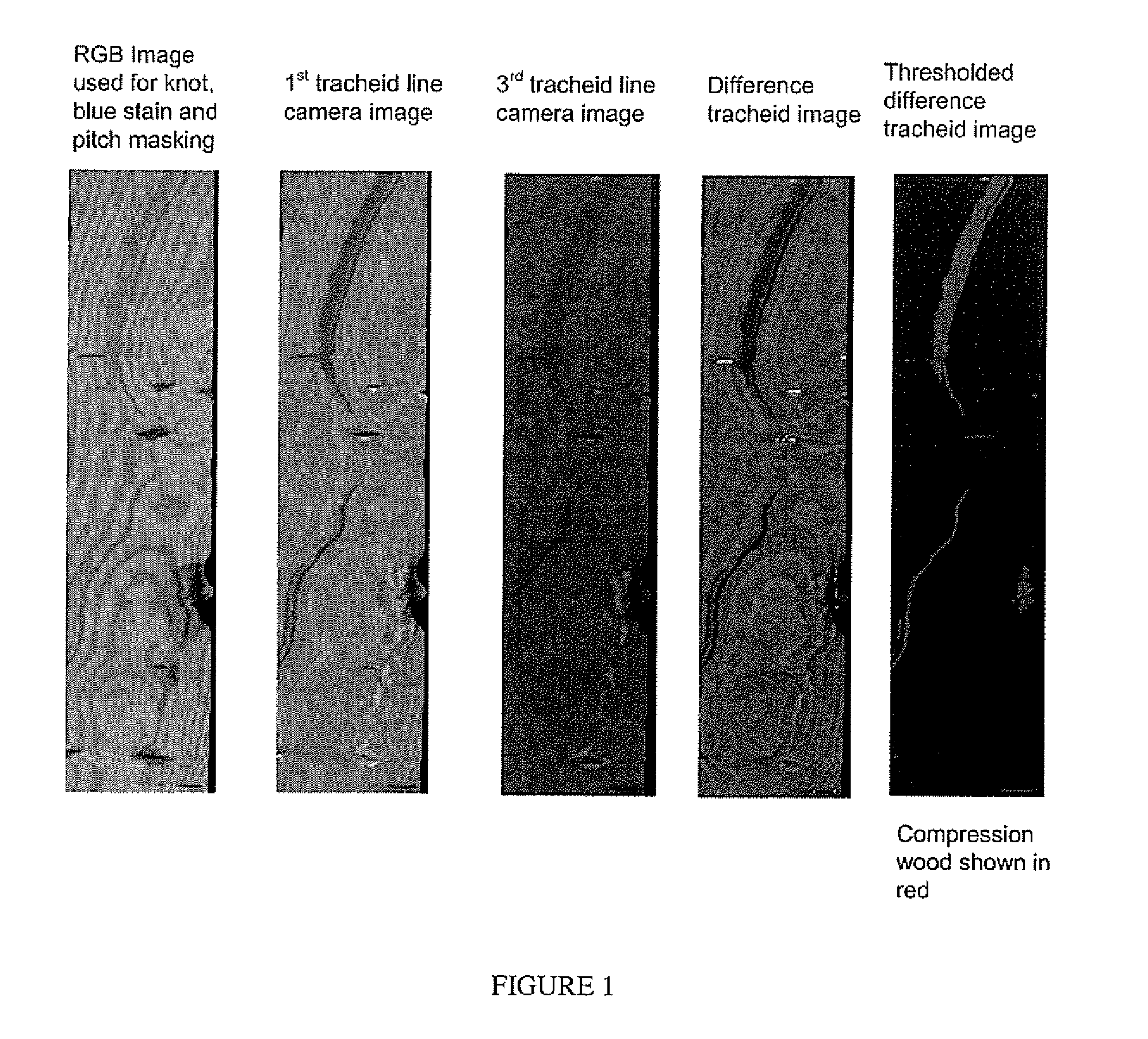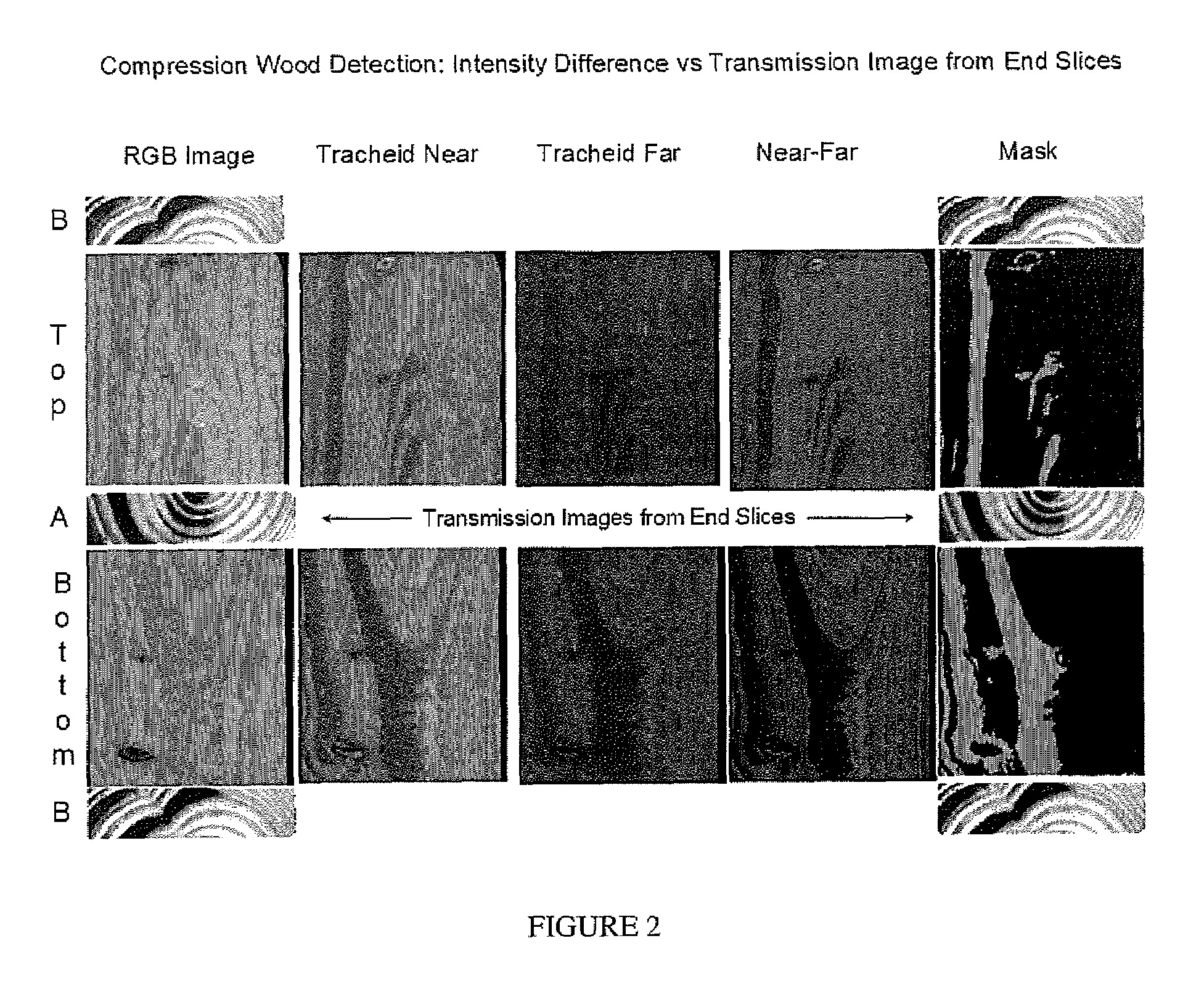Methods for detecting compression wood in lumber
a compression wood and detection method technology, applied in the direction of mechanical measurement arrangements, mechanical roughness/irregularity measurements, instruments, etc., can solve the problems of inability to apply in real time, inconvenient to use in real-time industrial applications, and inability to use thin section transmission methods
- Summary
- Abstract
- Description
- Claims
- Application Information
AI Technical Summary
Problems solved by technology
Method used
Image
Examples
Embodiment Construction
[0014]The present invention generally relates to detection of compression wood, blue stain, or pitch in a wood sample. A light beam is projected towards the wood sample. The light beam may be in the form of a laser line. In an embodiment, the light beam may be in the form of individual spots of light. Line or area cameras acquire images of light that is reflected from the wood sample. Based on the intensity of the reflected light at one or more locations on the wood sample, compression wood, blue stain, or pitch may be detected.
Compression Wood Detection in Lumber
[0015]In an embodiment, the compression wood detection system is directed to transporting lumber longitudinally past an image acquisition system. The imaging system consists of laser lines projected across the width of the board faces (top and bottom) and either line cameras or area cameras to record the intensity of diffusely reflected light on either side of the laser line. The method can be extended to include the board ...
PUM
| Property | Measurement | Unit |
|---|---|---|
| speeds | aaaaa | aaaaa |
| wavelength | aaaaa | aaaaa |
| width | aaaaa | aaaaa |
Abstract
Description
Claims
Application Information
 Login to View More
Login to View More - R&D
- Intellectual Property
- Life Sciences
- Materials
- Tech Scout
- Unparalleled Data Quality
- Higher Quality Content
- 60% Fewer Hallucinations
Browse by: Latest US Patents, China's latest patents, Technical Efficacy Thesaurus, Application Domain, Technology Topic, Popular Technical Reports.
© 2025 PatSnap. All rights reserved.Legal|Privacy policy|Modern Slavery Act Transparency Statement|Sitemap|About US| Contact US: help@patsnap.com



